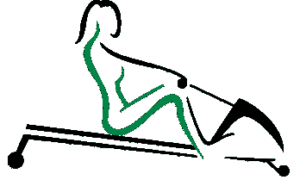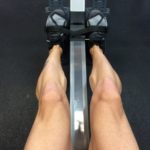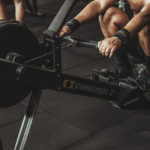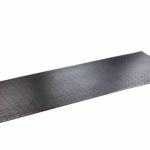Contents
Rowing machine shoulder pain is a common concern for rowers who have experienced shoulder injuries, especially in the past. It can be more concerning for rowers who are currently suffering from shoulder pain either during or after rowing.
Due to the movements utilized during rowing sessions, the shoulder is one of the most important joints engaged. As a result, the shoulder joint faces one of the greatest risks of sustaining injury as a result of overuse.
Let’s examine the main causes of rowing shoulder pain and some common injuries and concerns such as rotator cuff damage, muscular imbalances, and shoulder impingement.
You’ll also learn some simple ways of managing and/or reducing rowing machine shoulder pain. This will allow you to return to your workout routine armed with enough tips and tricks to enjoying pain-free rowing.
Common causes of rowing machine shoulder pain
According to WebMD, shoulder pain can be caused by:
- Fracture: Collisions, falls, and direct impacts can damage bones in the shoulder joint to such an extent that they crack. Bones that are more prone to fractures include the upper arm and clavicle.
- Separation: In addition to falls, had blows to the AC joint can lead to tearing of the ligaments holding the clavicle and scapula joints together.
- Dislocation: Rotating or pulling the shoulder too far back could cause the arm bone or humeral head to slip out of the shoulder socket. This is most common with ‘hard’ overhead movements such as throwing a baseball.
- Frozen shoulder: This commonly occurs as a result of excessive tissue adhesion building up in the shoulder joint. These adhesions could restrict easy movement and the shoulder feels like it is unable to move or frozen.
- Bursitis: The bursae can be damaged or irritated by repeated motions of the shoulder joint. This can cause swelling that reduces mobility and causes pain.
- Cartilage tear: Things that place excessive stress on the shoulders such as lifting heavy weights can easily damage the cartilage that is mainly responsible for protecting the shoulder joint.
- Rotator cuff tear: repetitive use or a fall can damage the rotator cuff muscles that hold the arm in place. This gradually wears out the muscles as you age.
- Shoulder impingement: The bones of the shoulders can shift in a way that they squeeze the tendons of the rotator cuff leading to inflammation and sometimes this can cause acute pain in the shoulder.
- Tendonitis: This can be caused by repetitive motion, a fall, or a direct impact to the shoulder wearing down your tendons. This triggers inflammation and acute pain as the tendons swell in a bid to protect the shoulder from further injury.
What could be the direct cause of my rowing shoulder pain?
Reading the above list has probably helped you rule out some probable causes of your shoulder pain mainly because they are not related to repetitive motions. Causes that are linked to repetitive motions include:
- Tendonitis
- Rotator cuff tears
- Bursitis
- Shoulder impingement
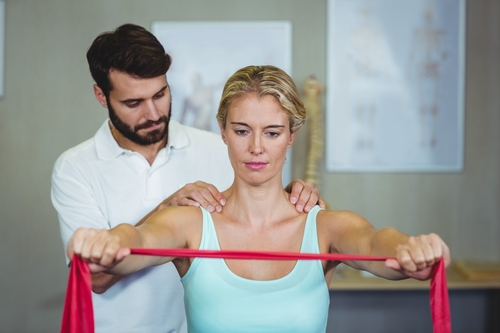 If you are an avid rower, your shoulder joints handle a lot of wear and tear especially if you row for more than 45 minutes per day. The shoulders are taking more than a thousand strokes per session and with every rowing stroke, the bones are crushing against the cartilage/bursae and the ligaments/tendons stretch and contract to keep the limbs moving.
If you are an avid rower, your shoulder joints handle a lot of wear and tear especially if you row for more than 45 minutes per day. The shoulders are taking more than a thousand strokes per session and with every rowing stroke, the bones are crushing against the cartilage/bursae and the ligaments/tendons stretch and contract to keep the limbs moving.
Therefore, you can see how the shoulders can develop injuries associated with repetitive motion such as rotator cuff tear, shoulder impingement, bursitis or even tendonitis.
Can rowing cause muscular imbalances?
Rowing utilizes a specific combination of muscles. When it comes to the upper body, the most heavily utilized muscles are the posterior deltoids, latissimus dorsi muscles, and rhomboids, with the forearms and biceps joining in.
But, the lateral (outside) and anterior (front) deltoids are typically left out. As a result, an imbalanced development of the muscles can occur because rowing pays most of the attention to the back of the shoulders.
However, over time, the imbalance can lead to problems such as poor posture, which tends to affect the spine as well as shoulder joints.
Rowing machine shoulder pain that occurs as s result of imbalanced musculature is often paired with reduced mobility in the arms as well as stiffness and pain in the upper thoracic spine. However, it is essential to understand that such muscular imbalances only occur in people who only row without performing other forms of exercise.
How can you avoid, manage, and prevent rowing machine shoulder pain?
While rowing machine workouts could be associated with the shoulder pains discussed above, rowing machine workout is also one of the best forms of rehabilitation for shoulder injuries.
Explore the Hydrow Rowing Machine for the Ultimate Rowing Experience
Rowing machine workouts increase strength around the shoulder blades by strengthening the muscles that enable smooth movement of the arms. As a result, better shoulder stabilization occurs, preventing other forms of shoulder injury.
The smooth movement of rowing also encourages smoother movement in your shoulders, which helps prevent the shoulder joints from stiffening or freezing up following injuries or surgery.
Treating rowing machine shoulder pain
- Protection
Protection typically involves wrapping a support or band around the injured shoulder. There are numerous types of shoulder braces that can help support or stabilize your shoulder joint.
- Rest
Physicians recommend resting as the most important means of managing and treating injuries. The shoulders are involved in almost every movement of the arms. As a result, most activities including cleaning, cooking, pull-ups, bench presses, or even using the computer at work involve the shoulder joint.
Rest and avoid rowing and other exercises that involve the shoulder until the pain subsides. You can use a sling to immobilize your shoulder, facilitate better healing, and sped up recovery.
- Ice
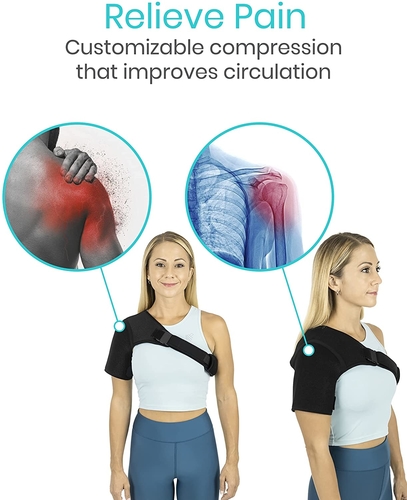 Ice is effective for reducing swelling and pain following an injury. You can apply ice to painful areas to help prevent inflammation and numb the discomfort that could interfere with motion.
Ice is effective for reducing swelling and pain following an injury. You can apply ice to painful areas to help prevent inflammation and numb the discomfort that could interfere with motion.
- Compression
You can use compression supports or bands to reduce swelling and prevent injuries from causing excessive pain or stiffening.
The bottom-line
Hard as it may seem, it’s recommended that you stay away from the rower for a few days until the pain in your shoulder subsides and you can perform the exercise without any discomfort.
It’s also important to master the proper form and technique for rowing to prevent strains and reduce wear and tear on your shoulder joints.
